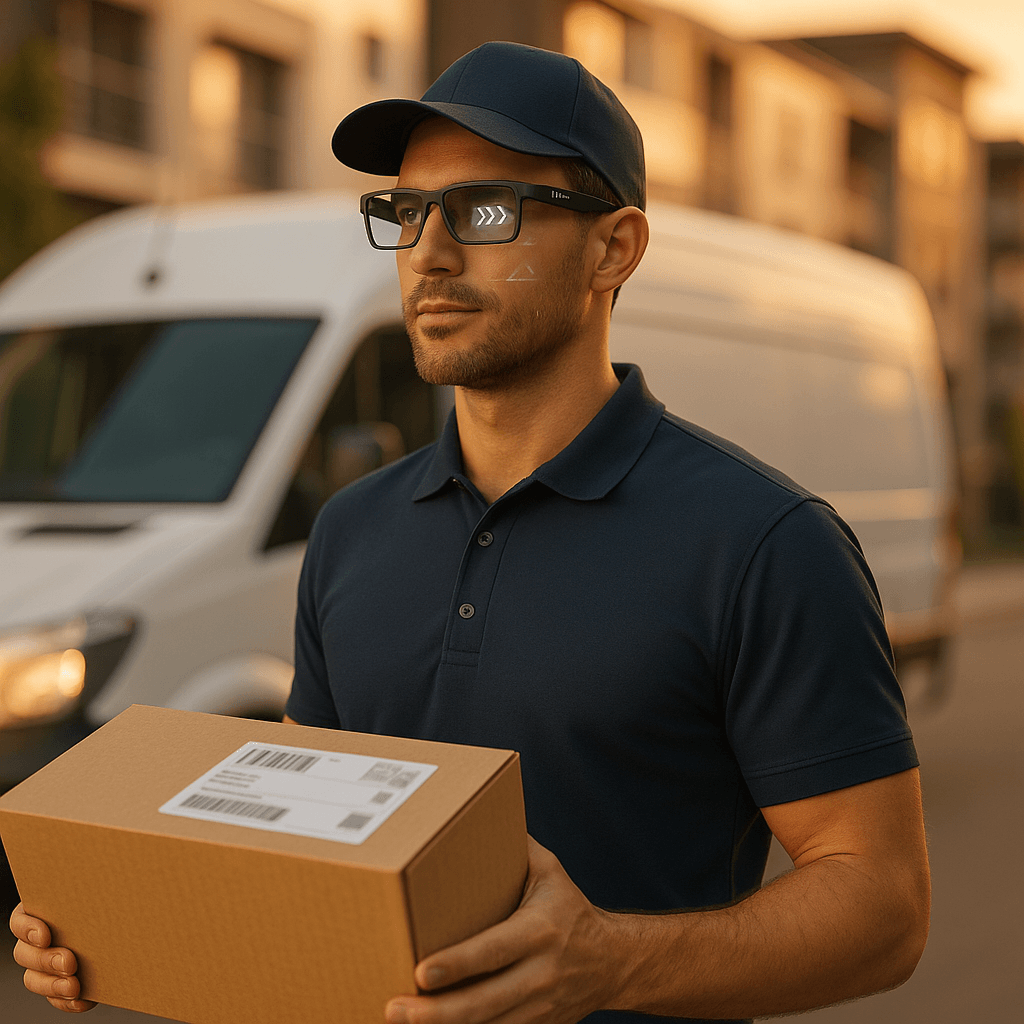Amazon just unveiled AI-powered smart glasses for its delivery drivers, marking a bold step into hands-free logistics technology. The glasses combine computer vision with real-time navigation to eliminate phone dependency during deliveries, potentially shaving precious seconds off each drop-off across millions of daily packages.
Amazon is betting that AI-powered smart glasses will revolutionize its massive delivery operation. The e-commerce giant announced Wednesday it's developing augmented reality glasses that let drivers scan packages, navigate delivery routes, and capture proof of delivery without touching their phones.
The timing couldn't be more critical. With e-commerce volumes surging and delivery expectations tightening, every second saved per delivery multiplies across Amazon's network of millions of daily packages. The glasses automatically activate when drivers park at delivery locations, using AI-powered sensing and computer vision to guide them through the entire process.
Here's how it works: drivers simply look through the glasses to locate packages inside their vehicles, then follow overlay directions to navigate complex apartment buildings or business campuses. The system can detect hazards in real-time and adjust for challenging conditions like low light. All delivery confirmation happens through the glasses' cameras, eliminating the fumbling between phone, package, and surroundings that currently slows drivers down.
The glasses connect to a controller worn in the delivery vest, complete with swappable batteries and an emergency button - a practical touch that shows Amazon's thinking beyond just efficiency to driver safety. The company even built in support for prescription and transitional lenses, acknowledging the diverse needs of its workforce.
This isn't Amazon's first rodeo with delivery innovation. The company has been testing autonomous delivery robots, experimenting with drone deliveries, and constantly refining its logistics algorithms. But smart glasses represent something different - a direct enhancement of human capability rather than replacement.
The development timeline reveals Amazon's methodical approach. Reuters reported last year that Amazon was working on the technology, and now it's in active trials across North America. The company plans to refine the system based on real-world feedback before broader deployment.












